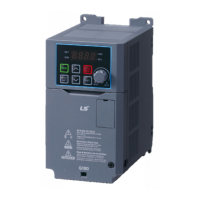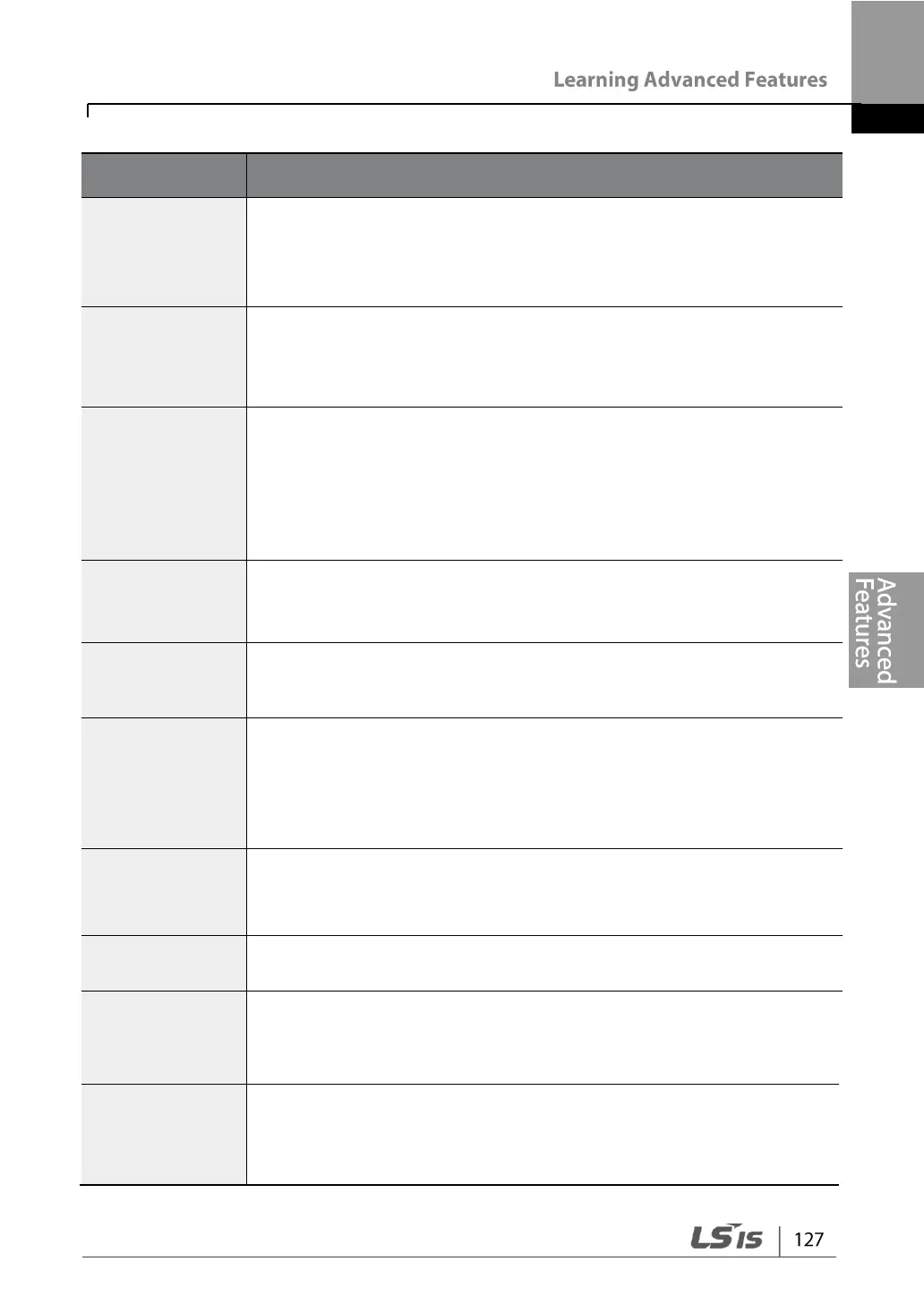Feedback cannot be set to an input item that is identical to the item
selected as the reference.
For example, when Ap.20 (Ref Source) is set to 1 (V1), for AP.21 (PID
F/B Source), an input other than the V1 terminal must be selected.
AP.22 PID P-
Gain, AP.26 P
Gain Scale
Sets the output ratio for differences (errors) between reference and
feedback. If the P-gain is set to 50%, then 50% of the error is output.
The setting range for P-gain is 0.0-1,000.0%. For ratios below 0.1%,
use AP.26 (P Gain Scale).
Sets the time to output accumulated errors. When the error is 100%,
the time taken for 100% output is set. When the integral time (PID I-
Time) is set to 1 second, 100% output occurs after 1 second of the
error remaining at 100%. Differences in a normal state can be
reduced by PID I Time.
When the multi-function terminal block is set to 21 (I-Term Clear) and
is turned on, all of the accumulated errors are deleted.
Sets the output volume for the rate of change in errors. If the
differential time (PID D-Time) is set to 1 ms and the rate of change in
errors per sec is 100%, output occurs at 1% per 10 ms.
Sets the ratio that adds the target to the PID output. Adjusting this
value leads to a faster response.
Used when the output of the PID controller changes too fast or the
entire system is unstable, due to severe oscillation. In general, a lower
value (default value=0) is used to speed up response time, but in
some cases a higher value increases stability. The higher the value,
the more stable the PID controller output is, but the slower the
response time.
AP.29 PID Limit
Hi,
AP.30 PID Limit
Lo
Limits the output of the controller.
Adjusts the volume of the controller output.
AP.43 PID Unit
Gain,
AP.44 PID Unit
Scale
Adjusts the size to fit the unit.
The PID controller’s gain can be adjusted using the multi-function
terminal. When a terminal is selected from In.65–69 and set to 24 (P
Gain2), and if the selected terminal is entered, the gain set in AP.22
and AP.23 can be switched to the gain set in AP.45.

